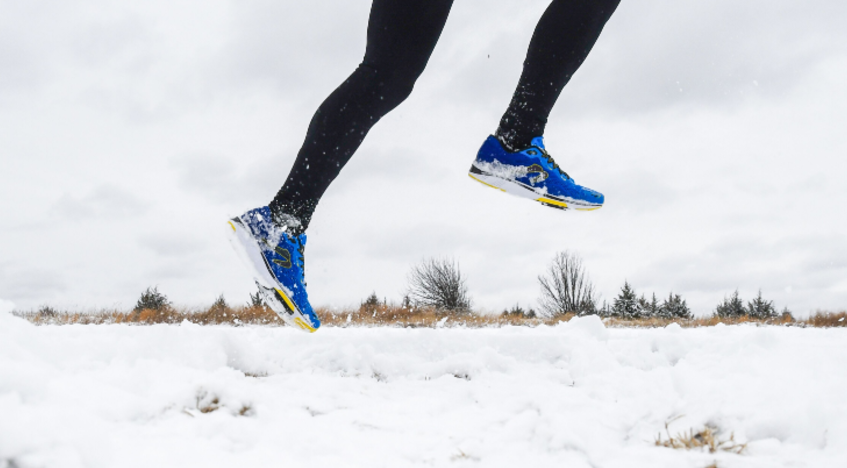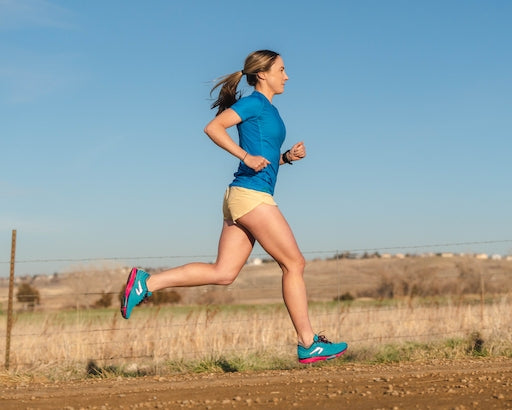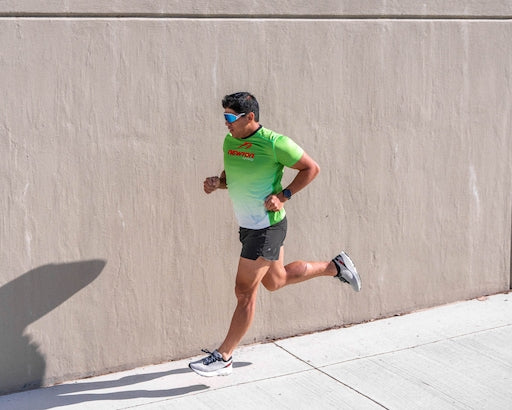
Finding Optimal Cadence
7 February 2020
Finding your Groove
When out for your next run, experiment with trying to find your “Groove.” Running can and should be largely a passive act. With good posture and a slight forward lean, all that is needed is relaxing into an efficient “cadence,” or foot strike rate. Surprisingly, optimal cadence is about the same for all runners. Speed does not matter. It may be counter intuitive, but an efficient runner running 10 minutes per mile pace has the same cadence as an efficient runner running a 5 minute per mile pace.
Optimal cadence (the number of steps you take per minute) is around 180. Why is this number optimal? If the cadence is greater than 180 a runner will engage muscles faster than the stored energy in the tendons can recoil. This is seen in sprinting. Sprinting is a very powerful gait type that requires tremendous muscular effort and is only sustainable over short distances. If the cadence is significantly slower than 180, the potential energy stored in the tendon is dampened and therefore lost. Studies show that the there is less O2 consumption at a cadence of 180 because of less active muscle engagement. (2007(R)-Midgley, 2006-Conoboy, 2005-Dallam, 2004(R)-Saunders, 1994-Morgan, 1995-Hamill, 1992-Martin, 1990-Kaneko, 1989-Cavanagh, 1982-Cavanagh, 1982-Power).
Here’s a good way to demonstrate this: jump as high as you can, leaving from both feet. You will notice that before you lift upward, you will first drop down to load your tendons. Assuming you time your jump well, you can use this stored energy to help launch you into the air. By contrast, try to slowly lower into the same squat position and hold there for a couple of seconds before jumping upward. By altering the rate of loading and releasing, you will notice a significant reduction to the height of your jump, as well as an increased effort.
The variation in optimal cadence ranges from 175-185. This range is a result of upper to lower leg ratio, bone to muscle density ratio, level of hydration, length of calf muscles, age and tissue elasticity. Given these factors optimal cadence still only varies by 10 steps per minute.
There are several ways to work on finding your optimal cadence. Use a metronome to help you determine what 180 feels like to you. Some people find it easier to count foot strikes on one side for a minute, then double to come up with your cadence.
If you find you are below 180, here are some drills to practice:
- Barefoot running over safe surfaces in very small amounts can help you improve foot position and will naturally quicken most runners cadence by 10 steps per minute.

- Exaggerate cadence by doing “high knee” and “butt kick” drills that will improve muscle recruitment and get those legs to turn over quicker.

- Jumping rope or pretending to jump rope is another great way to feel the speed of optimal cadence. While jumping rope there is a clear increased effort when either slowing down or speeding up your tempo. Again, the reason for this “Groove” is that it is the rate of which your tendons can store and release energy, or “Elastic Recoil.”

Many runners run with slow cadence which will increase ground contact time, ie: the amount of time your foot is in contact with the ground during each step. Many running shoes are manufactured with an elevated heel and are comprised of soft EVA foam. An elevated heel on the shoe can cause the foot to contact the ground farther out in front of the body’s center of mass, creating a longer period of time that the rubber is in contact with the ground. A level shoe allows the foot to make contact closer to the center of mass and will reduce the total amount of time the foot is on the ground. Finally, EVA foam puts a communication barrier between the foot and the ground making it harder to feel the ground. The longer it takes to register the ground, stabilize and get off of the ground, the greater the ground contact time and the slower the cadence.
Find a shoe that is level to the ground, allows for good afferent feedback (communication), and that is not just soft EVA foam. Allow yourself to relax into good posture, take advantage of gravity with a slight forward lean (from the ankles) and work on finding your optimal cadence. Now get out there and find your Groove!
Douglas Bertram, CEO and Founder of Structural Elements®

Newton Running and Structural Elements®, (se) ®, partnered to enhance the wellness, education and health of runners worldwide. Structural Elements, is a unique wellness brand offering a transformative and therapeutic approach that focuses on how the body functions.
The name Structural Elements® refers to the proprietary method Bertram developed as an acupuncturist. Operating on the fundamental belief that the body is a single unit, Bertram developed a mapping technique locating patterns of focal adhesions in response to mechanical stress. Structural Elements® practitioners, also referred to as body engineers, can be practicing physical therapists, chiropractors, acupuncturists and osteopathic physicians alike.




